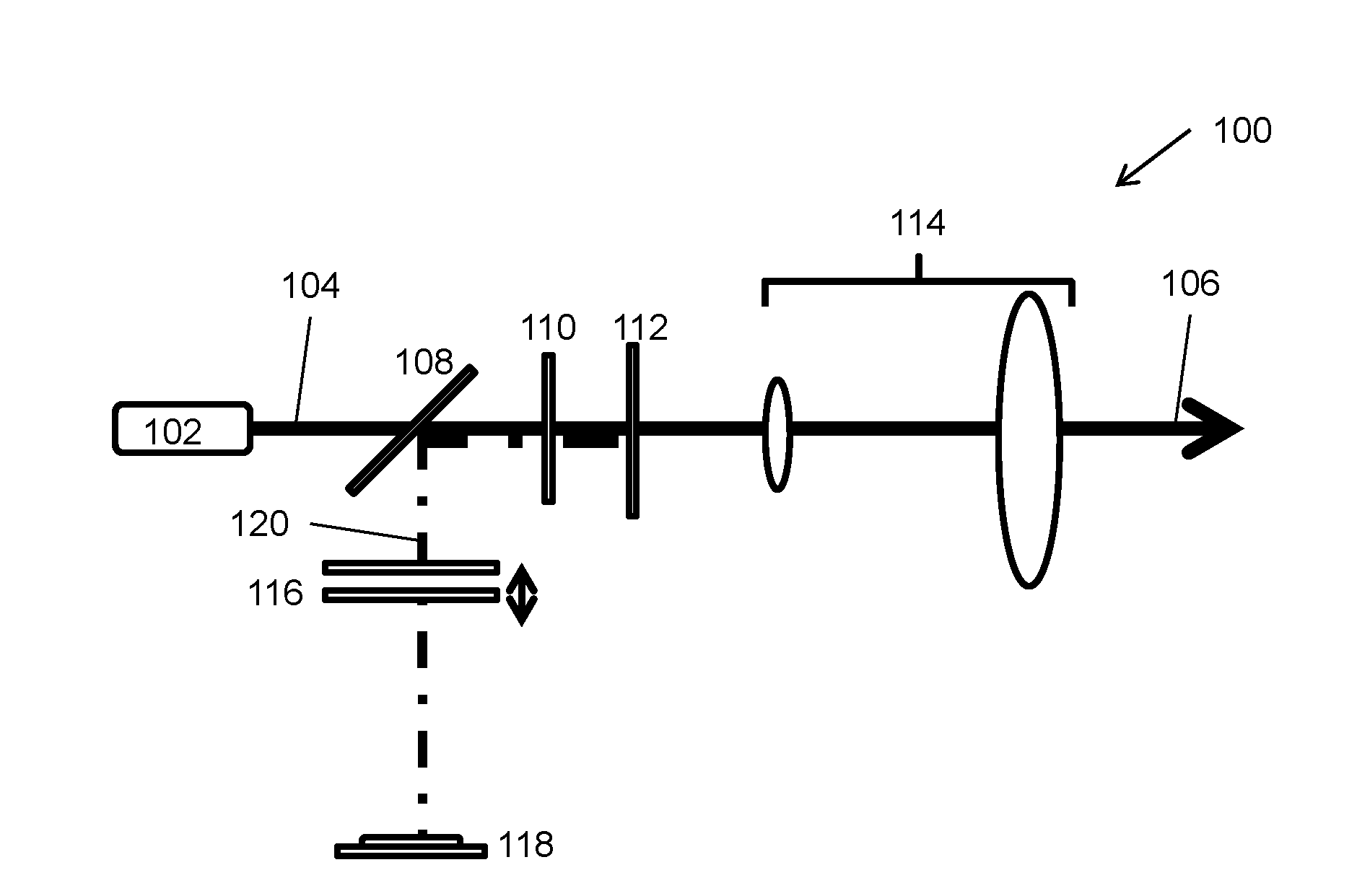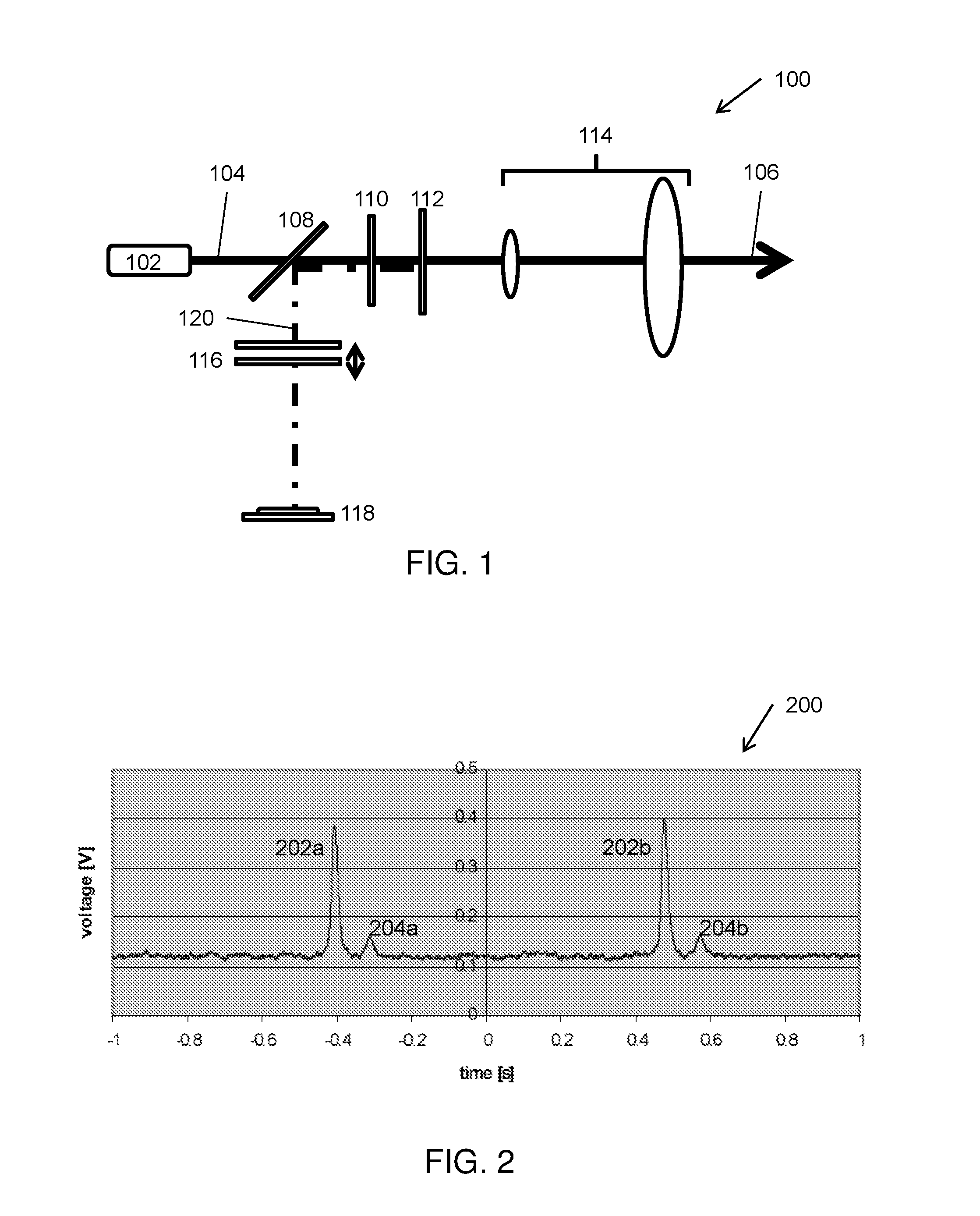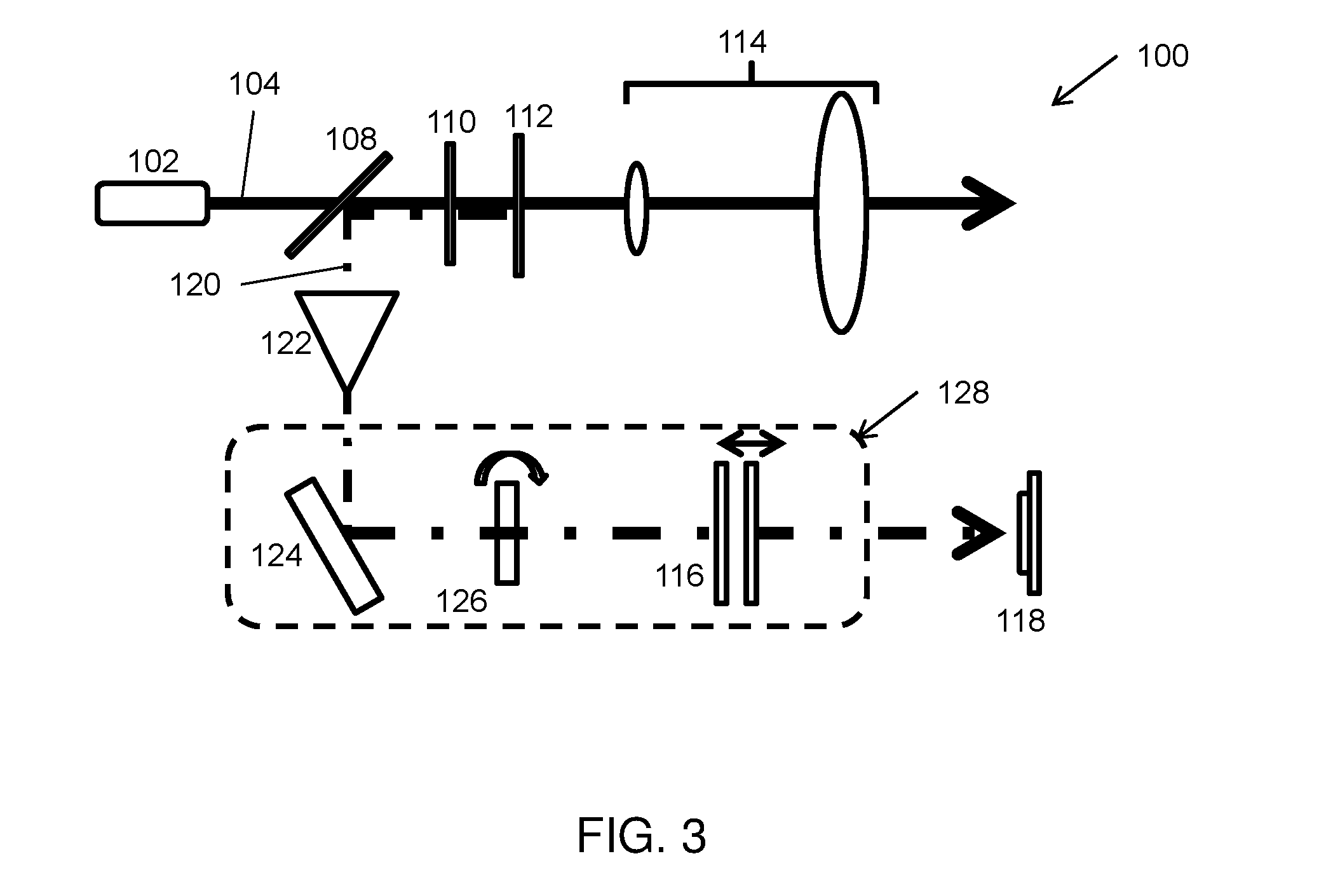Coaxial direct-detection lidar-system
a lidar and coaxial technology, applied in the field of coaxial direct detection lidar system, can solve the problem of not disclosing the existence of the lidar, and achieve the effects of low maintenance requirements, low component count, and increased vibration toleran
- Summary
- Abstract
- Description
- Claims
- Application Information
AI Technical Summary
Benefits of technology
Problems solved by technology
Method used
Image
Examples
example 1
[0047]In an example relating to the embodiment shown in FIG. 1, the scanning FPI 116 has a free-spectral range (FSR) of 1 GHz and a finesse of about 500. The full-width half-maximum (FWHM) of the FPI peak is about 2 MHz. Peak transmission of the FPI at a wavelength of 1575 nm is about 14%. The laser emits at a wavelength of 1575 nm, and a femtowatt photoreceiver acts as the detector.
[0048]FIG. 2 shows an experimental scan 200 acquired with the system of example 1. The voltage values on the ordinate axis correspond to optical intensity measured by the detector 118, and the time values on the abscissa axis correspond to peak frequencies of the scanning FPI 116. The plot shows two scans, producing two sets of peaks 202a / 204a and 202b / 204b, respectively. The largest peaks 202a and 202b show the reference signal, i.e. indicating no Doppler shift. The smaller peaks 204a and 204b show the backscattered signal. The target used is a rotating disk, giving rise to a Doppler shift of approximat...
example 2
[0050]In an example relating to the embodiment shown in FIG. 3, the optical filter 124 is an optical reflection grating with a wavelength resolution of 0.2 nm. The solid FPI 126 is a 2 mm etalon with a finesse of 100. The combined tunable band-pass filter 128 has a resolution of about 2 MHz.
example 3
[0051]In an example relating to the embodiment shown in FIG. 3, the narrowband optical filter 128 suppresses the very broadband background light (and possibly ASE) by bandpass filtering in three-stages: First optical filter 124 will limit the band to about 0.2 nm or a 25 GHz band. Then static FPI 126 further reduces the band to say 100 MHz (enough to cover speeds from −40 to +40 m / s). Further noise filtering is done by the final FPI (scanning or static if the laser frequency is tunable).
PUM
 Login to View More
Login to View More Abstract
Description
Claims
Application Information
 Login to View More
Login to View More - R&D
- Intellectual Property
- Life Sciences
- Materials
- Tech Scout
- Unparalleled Data Quality
- Higher Quality Content
- 60% Fewer Hallucinations
Browse by: Latest US Patents, China's latest patents, Technical Efficacy Thesaurus, Application Domain, Technology Topic, Popular Technical Reports.
© 2025 PatSnap. All rights reserved.Legal|Privacy policy|Modern Slavery Act Transparency Statement|Sitemap|About US| Contact US: help@patsnap.com



